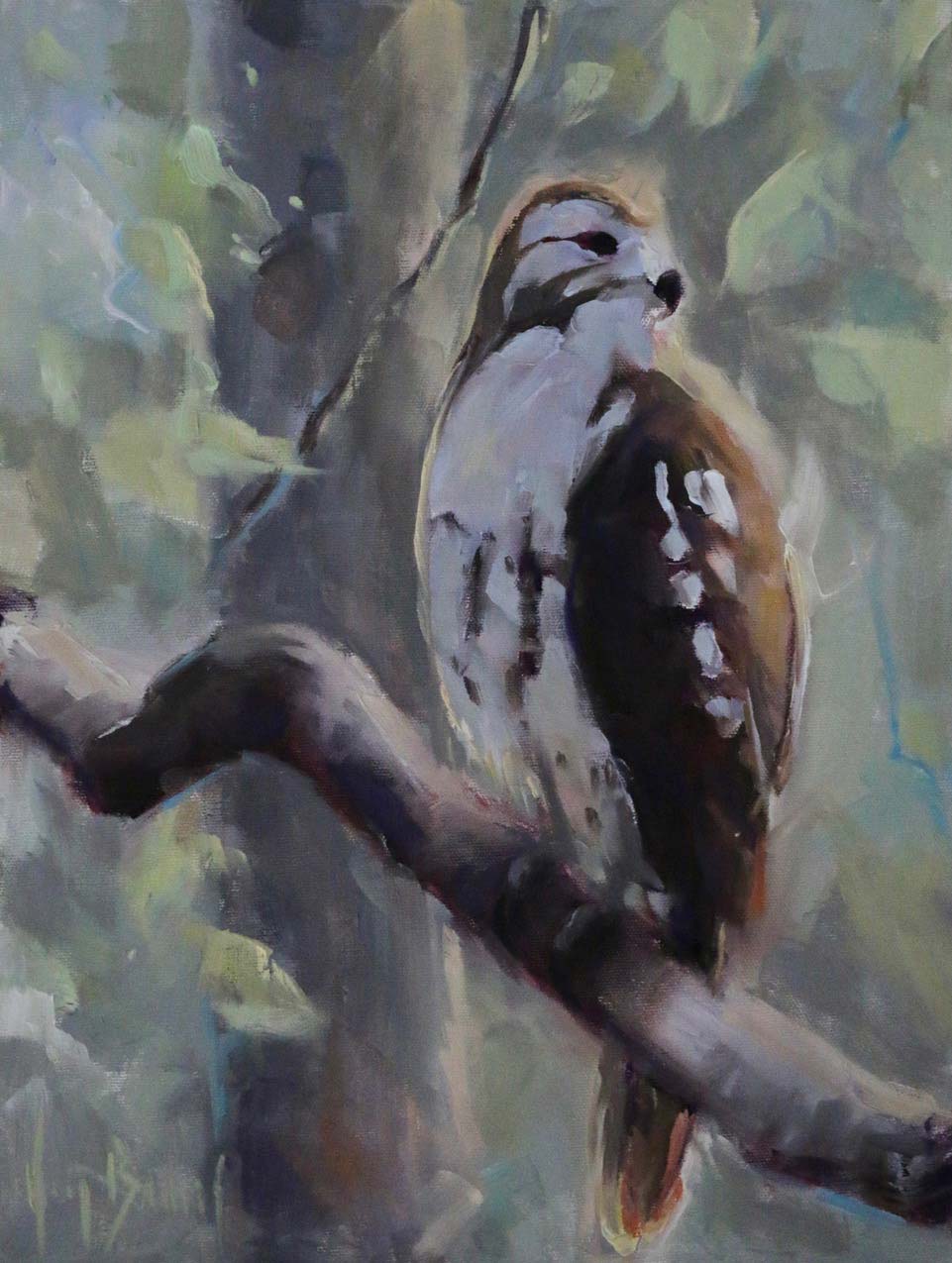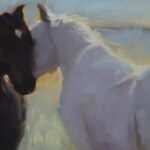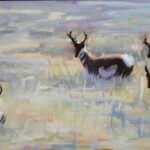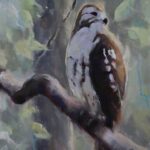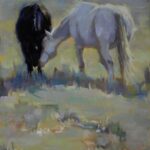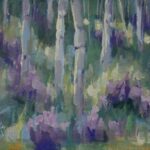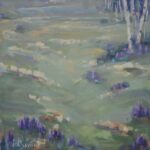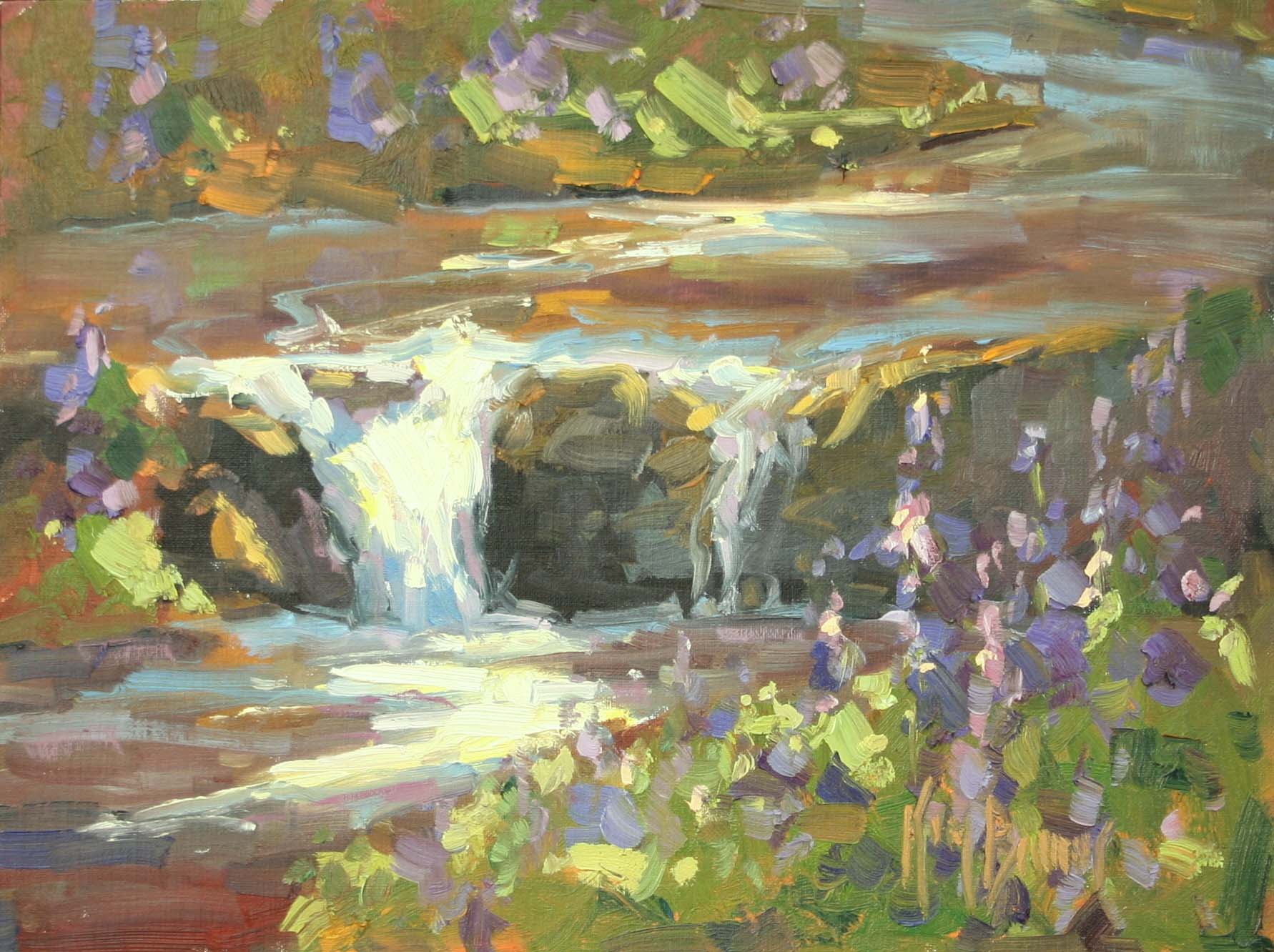
Purple Reign
The Dwarf Larkspur are peaking right now at my local wildlife sanctuary. It is glory in 50 shades of blue and lavender. This year is the most remarkable that I have ever had the privilege of viewing. The early morning sun back-lights the spires, igniting dark violet warmth from the inside. Truly a shag rug of deep purple and rosy-violet singing the “Hallelujah Chorus” in bold color.
Our natural area has the highest protection provided by We the People of Tennessee. That is a very helpful thing. Rules that can irritate those who have free range pets and children allow the fragile 1200 acres to thrive against all odds.
Over the last few years, a concentrated effort has been made to eliminate Japanese Honeysuckle, a woody bush, from our haven. This particular non-native has aggressively outpaced all native plants in the park as the first to leaf out in spring and the last to drop leaves in the fall. This stunning advantage, along with a lack of natural predators, has allowed the interloper to infiltrate many formerly diverse areas in Tennessee.
When removed, however, the larkspur rejoices. Dwarf Larkspur, I am told, are not singular plants, but grow in colonies. I like that idea. Aspen trees in Colorado are all one entity, one strain of DNA stretching out to welcome new members to the proverbial family tree. I think of how the Larkspur must feel when finally seeing their long lost relatives. No longer blocked by giant crowds of tenaciously rooted leafy intruders. One giant purple family reunion plunging up from the soil and nodding to fields of cousins, aunts and grandpas.
As a child, I wanted nothing more than to pick wildflowers wherever they came up and greedily bring that beauty home to prolong my personal enjoyment. At some point, a teacher or some other wise adult taught me to leave the blossoms so they would multiply and also so that others could enjoy them.
Today I still feel the tug to gather wild blooms but I now have a cutting garden to satisfy that urge. Over the years the seeds of generosity, sharing and respect for the struggle of survival, has grown strong and fit inside my soul. I leave the wildflowers where they belong. Now moments like today in the crisp spring morning are the prize I carry home, the beautiful day a memory. That unexpected offering is safe and much more precious held there than withering in a vase on my window sill.
We owe a debt for funds generously donated to remove non-native invasive species by two tremendous nature lovers, Ann and Clark Tidwell. Yes, you heard right. Pulling weedy woody bullies from the soil needs special patronage. My sons, both Eagle Scouts and graduates of the Jr. Ranger program have done this job of yanking up dreaded foreigners for the health of our protected forest. Sometimes they were paid but mostly as volunteers. My back and shoulders can’t do it but my heart wills those who can to pitch in when they are able. And when an expanse is cleared, the wildflowers erupt in thanksgiving.



